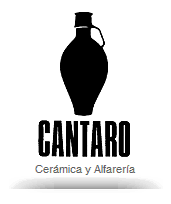During the eight centuries of Arab presence in
Spain, it was developed, both in the Arab territories
and Christians, a ceramic of a very high quality which
influenced the production of all peninsular and
European potteries.
Ceramic procedures basically imported from the
East, had decisive technological advances, such as
the white enamel tin, absolute mastery of cooking
techniques and luster.
Utilitarian pieces were made: tableware,
curbstones well, amphorae, pots and pans;
ornamental and architectural accessories.
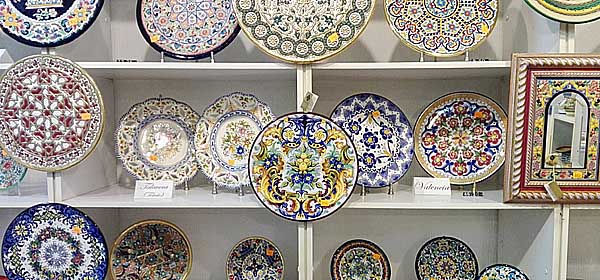
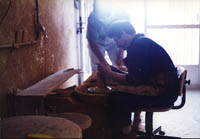
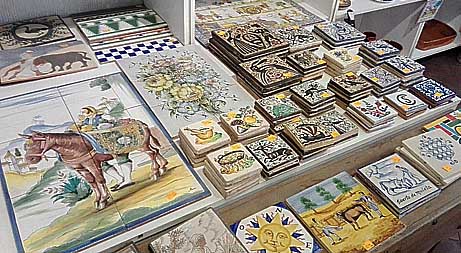
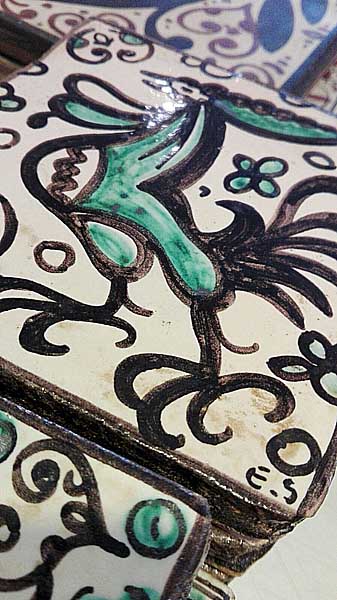
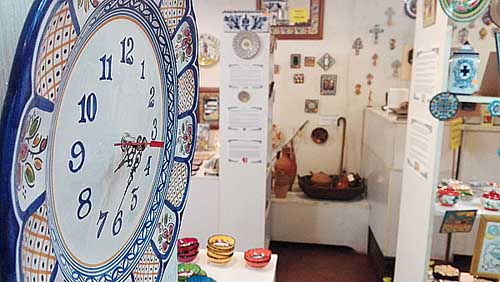
Ceramics first appear in the Neolithic period. The first known tables date back 2000 BC, and two centuries before
the Christian age the foot lathe that uses centrifugal force appears. That lathe is still widely in use in Spain today,
whilst some ceramic centres in the country still use the hand table just as it was used in prehistoric times
The metals age brought a real revolution in the world of ceramics due to the introduction of copper. The discover of borax as a material that
melts with copper gave way to the birth of glased ceramics. As a result of the various occupations of the Iberian Peninsula, the aboriginal
incorporated different techniques and styles that still exist, hence the variety of current Spanish ceramics of Iberian, Greek, Phoenician, Roman
and finally, Arabic, who introduced the word alfar.
The highly stylized, geometric and vegetable decorations were made by
various techniques of Islamic origin.
In Manises (Valencia) still ceramics "luster" is preserved. Its
manufacturing process is the same as the Arab-Moorish tradition left us.
They use three firings in its production, the last being the most difficult to
master technically.
Architectural ceramics in Spain had a very important role in both
structural and decorative and hygienic functions. Without a doubt, the
main attraction is the tile that was assimilated by the Christian kingdoms
and appears in the Moorish art. In Aragon, from the thirteenth century
they used a green and black ceramic on a white background, made by
molds or around.
Over time outdoor use was gaining prominence. In the interior, the monochrome pieces
were used as flooring and painted tiles as decoration. In Catalonia, the potters who were
Christians, used the same colors as Islamic, although the influence of blue was introduced
since the thirteenth century. The bicolor ceramic started to be exported to Europe. In the
fifteenth century Gothic-Christian aesthetics prevailed and ceramic paneling, baseboards
and floors painted freehand were also made in Catalonia.
The discoveries of the sixteenth century in mineralogy and chemistry, led to great advances
in ceramics with the introduction of bright tin opaque glass, which will be the starting point
of a new ceramic family. From Spain majolica was exported. Renaissance cultural centers
were established in Italy and Flanders, also for ceramics. The new colors and painting
techniques quickly spread, especially among the new bourgeoisie. Valencian exports
became fashionable in Italy in the Renaissance, and acquired the same level of
development as the Hispanic, but with characteristics of their own.
The itinerant nature of Italian potters made their art pierce through borders and Sevilla
lived this influence with Niculoso Pisano, who in the late fifteenth century introduced in
Spain painting technique "a la Italian" combining it with the edge for tiles series. During the
sixteenth century ridge tiles were exported to every port in the Mediterranean, the Atlantic
European or American.
Under the rule of Austria, in the fifteenth century and early sixteenth century Antwerp met
at the golden dinnerware Manises and Seville tiles. With economic development that lived
the region and using the Italian novelties, it began a ceramic production which ran for more
than 250 years. Thanks to Italian emigrants it appears in Antwerp in the sixteenth century
polychrome. This activity spread to Spain, Portugal and North Holland.
The city of Talavera de la Reina, situated on the banks of the Tagus in the province of
Toledo, produced from the XVI century Seville and Catalonia alongside a ceramic that
captures the spirit of the new trend that affects all the arts: the Renaissance . Muslim art
abstraction is abandoned and brilliant colors serve to emphasize the classicism of the
decorative motifs are adopted.
This pottery had a great acceptance among the nobility, the bourgeoisie
and the great religious orders, who were his regular customers, but also
exported to Mexico, which then belonged to the Spanish crown, and exerted
great influence throughout the Spanish Ceramics production and American.
The crisis came in the eighteenth century with the emergence of the Alcora
factory, where teachers had to import. Polychrome series is the most
important of Talavera. Ceramics surfaces that are conceived as pictorial
supports were decorated with mythological, allegorical or religious figurative
scenes copied from engravings of the time.
Located a few kilometers from Talavera, the town of Puente del Arzobispo was an important center of production of ceramics from the XVI
century. Almost all series of Talavera originated in Puente del Arzobispo, so that the pieces are difficult to classify as mentioned with the common
attribution of Talavera - Puente del Arzobispo. From the late eighteenth century and during the nineteenth century, the production is
characterized by the predominance of green and the abundance of birds and trees.
Catalonia had begun its ceramic tradition by the semi-industrial production of tiles in the fifteenth century in Barcelona. In the sixteenth
imports of dry Sevillian tiles and ridge rope displace own creations. Catalan production then moved to Reus, where adopt the Renaissance
aesthetic inspired by the goldsmith with relief. Shortly after polychrome tile appears with the adoption of the Italian models, so the tiles becomes
the most important aspect of ceramics. The sumptuous creations and decorative churches, stately homes, streets and buildings are appreciated,
tiles lining the walls.
Special mention deserves the application of ceramics in construction with the advent of modernism, the hand of architects like Gaudí and
Doménech Montaner, a cultural movement that unites art and industry and assumes perfectly the tastes and topics of the moment: review of
styles and nature. With technical innovations of the industrial revolution, arrivals from England to Sevilla, changed the traditional production
schemes ceramics. In 1841 Pickman La Cartuja settled in this factory came with plaster molds, semi-dry shaping by mechanical dams and
recovered old techniques with new media such as dry rope or edge. This thriving industry would not undertake the necessary reforms until 1960.
At present interest in ceramics and pottery it is kept alive even though many potteries have disappeared and others are about to disappear.
